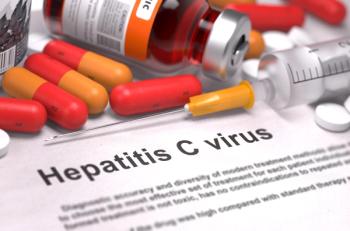
The Role of PBMs in Providing Access to Effective Care for Idiopathic Pulmonary Fibrosis
The annual cost to the Medicare system for IPF is estimated to be $1 billion annually.
The chronic nature of idiopathic pulmonary fibrosis (IPF), coupled with high rates of comorbidities, puts a substantial financial burden on payers, particularly Medicare, according to a study published in the American Journal of Managed Care.
Idiopathic Pulmonary Fibrosis
IPF is a chronic, progressive, fibrosing interstitial pneumonia. Its cause is unknown, and primarily affects individuals aged 60 and older. The annual IPF incidence in a Medicare population is between 78.7 and 93.2 per 100,000 person-years. Until recently, there were no approved therapies to treat IPF, except lung transplants.
Mortality associated with IPF was high whether patients received lung transplants or not, with a median survival of 3 years post-diagnosis. The annual cost to the Medicare system for IPF is estimated to be $1 billion annually, as reported by Thomas Morrow, MD, in the American Journal of Managed Care (April 2015).
New Therapies, Higher Treatment Costs
The high cost of IPF reflects the seriousness of this disease. Patients with IPF also have higher rates of comorbidities than matched controls, including pulmonary hypertension, chronic obstructive pulmonary disease, pulmonary embolism, and pulmonary infection.
In 2015, the American Thoracic Society revised their treatment recommendations to include 2 drugs—pirfenidone (Esbriet) and ‎nintedanib (Ofev)—approved by the FDA in 2014 for conditional use in the treatment of IPF. IPF may still progress after patients use these drugs. However, each drug has been shown to significantly slow the progression of the disease.
These drugs add to the financial burden of the disease, with reported annual treatment costs of $98,000 and $94,000, respectively, according to the study. Drugs used to treat conditions such as hepatitis C and cancer have a finite dosing schedule. In comparison, IPF patients taking Esbriet or Ofev will remain on these drugs until they die or receive a lung transplant.
Managing Costs
Esbriet and Ofev fall into the category of specialty drugs. In 2014, specialty drugs accounted for one-third of all pharmaceutical spending in the United States.
The role of pharmacy benefit managers (PBMs) is critical to manage both the costs and the appropriate utilization of specialty drugs, including those indicated to treat IPF, the study noted. Negotiating rebates, increasing patient adherence, and disease management tools are just a few of the options PBMs use to control costs, as well as ensure effective patient care.
In Figure 1 are the most commonly used strategies to manage specialty drug utilization based on a 2014 survey of 366 employers covering an estimated 23.5 million enrollees.
(Figure 1)Commonly Used Specialty Drug Utilization Strategies, 2014
Strategy
Pharmacy Benefit 2014
(n=300)
Medical Benefit 2014
(n = 195)
Prior authorization
90%
72%
Clinical care management programs
82%
61%
Step Therapy
74%
51%
Source: Pharmacy Benefit Management Institute. 2015 Specialty Drug Benefit Report
The study noted 2 strategies used by PBMs that may be effective with the introduction of Esbriet and Ofev include the following. The opportunities for PBMs are by no means limited to these examples:
- Discounts
There have been no head-to-head clinical trials between Esbriet and Ofev and their individual trials demonstrated similar outcomes. In this situation, PBMs have the opportunity to negotiate deep discounts with the manufacturers in exchange for formulary exclusivity of one drug or the other.
- Disease Management
Disease management can monitor drug use and its effects, encourage patient adherence, and suggest preventive care. In the case of IPF, disease management may result in reduced or the cessation of tobacco usage.
A disease management program is particularly important in a disease like IPF, in which patients experience an overwhelming lack of psychosocial support, educational resources, and information regarding treatment options, supplemental oxygen, pulmonary rehabilitation, and transplantation.
Current Coverage of Esbriet and Ofev
Not all plans are covering the drugs immediately due to a lack of clinical experience and utilization. To date, it appears that most plans have put Esbriet and Ofev on tiers 4 and 5, and even tier 6.
Some require prior authorization, limit patients to a 30-day prescription, prohibit concurrent use, require that patients have a clinically documented diagnosis of IPF and be under the care of a pulmonologist, or obtain the drugs only through a specialty pharmacy.
Benefit Management Outlook
Because Esbriet and Ofev are so recently approved, PBMs will have to wait for data to determine which might be more cost-effective. In the interim, nondrug options, including the development of IPF-specific mobile apps and wearable devices, home-monitoring devices, and virtual health assistants may provide PBMs with additional tools and data sources to manage IPF.
Newsletter
Stay informed on drug updates, treatment guidelines, and pharmacy practice trends—subscribe to Pharmacy Times for weekly clinical insights.




















































































































































































































